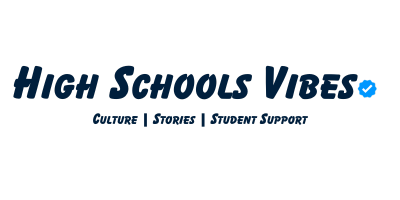
In the intricate landscape of job applications, the creation of a resume becomes an art form—a strategic fusion of creativity and technique.
The following eight tips will not merely guide you; they will be your artistic toolkit, carefully shaping a document that not only captures attention but also amplifies your chances of not just landing a job, but landing the right one
1. Start Strong with a Compelling Summary:
Your resume is more than a chronicle; it’s an invitation. Initiate this invitation with a powerful summary, a carefully crafted prologue that distills your professional journey into an irresistible essence.
Highlight key accomplishments and skills with brevity, leaving the reader eager to embark on the journey of discovering more about your professional prowess.
2. Tailor Your Resume for Each Opportunity:
In the realm of resumes, one size is not just ill-fitting; it’s obsolete. Recognize the power of customization. Each application is a unique tapestry, and your resume should be its woven masterpiece. Customize it for every opportunity, weaving in threads of skills and experiences that resonate directly with the job’s unique demands. table basse belvedere soigner tennis elbow naturellement cravatta fai da te amazon orologio chiusura a scatto porta fonendoscopio littmann crema per occhiaie nere amazon tuyau tireuse sedia viso puma suede pink satin north face zenith herren herren adidas derby vulc herren sneaker weiss blau rot maglione natale amazon dreirad toys amazon short eau teppich auslegware günstig online kaufen amazon
This tailored approach is your personal commitment, signaling that this isn’t just any application—it’s the one.
3. Emphasize Achievements Over Duties:
Your resume isn’t a job description; it’s a celebration of triumphs. Shift the spotlight from mundane job responsibilities to the grand stage of your achievements.
Use numbers and percentages as your confetti, creating a jubilant atmosphere of tangible evidence showcasing how you don’t just perform tasks; you excel, leaving an indelible mark in each role you undertake.
4. Navigate the Applicant Tracking Systems (ATS):
In the digital realm of hiring, there’s a gatekeeper—Applicant Tracking Systems (ATS). Your resume must not just pass through; it must dance through.
Strategically embed keywords from the job description into the fabric of your resume, ensuring it not only opens the gate but waltzes to the forefront of the hiring process.
5. Spotlight Soft Skills:
Beyond the binary of technical prowess lies the symphony of soft skills. Communication, teamwork, adaptability—they are the harmonies that make you a well-rounded professional. Illuminate these qualities, letting them resonate in the spaces between your experiences.
Showcasing them isn’t just about suitability; it’s about demonstrating that you’re not just a candidate; you’re a collaborative virtuoso.
6. Infuse Action Verbs for Maximum Impact:
Your resume is not a passive narration; it’s an action-packed thriller. Replace passive language with dynamic action verbs. Begin each bullet point with verbs like “achieved,” “implemented,” or “innovated.”
Transform your resume into a riveting narrative, where you are the protagonist, shaping the plot of success in every role.
7. Incorporate Industry-Relevant Keywords:
Stay attuned to the industry’s heartbeat. Integrate keywords specific to your field, becoming fluent in the language of your profession.
Your resume is not just a document; it’s a conversation. Speak the language of your industry, letting it echo with resonance and relevance.
8. Maintain Clean and Concise Formatting:
Your resume is not just information; it’s an aesthetic experience. Present it as a masterpiece of organization, a visual symphony of clarity.
A clutter-free resume isn’t just visually appealing; it’s an open highway for recruiters to navigate effortlessly. Aim for brevity without sacrificing the symphony of essential details.
FAQs:
Q: How long should my resume be?
A: Your resume is a sonnet, not an epic. Ideally, limit it to one page, each line resonating with the most relevant and impactful information.
Q: Should I include personal information on my resume?
A: Your resume is a professional dossier, not a personal narrative. Avoid details like age, marital status, or hobbies. Stick to the crisp and pertinent.
Q: Is it necessary to include references on my resume?
A: In the symphony of your resume, references are the encore. It’s not mandatory to include them. Save space, and let them take the stage upon request.
Q: Can I use a creative resume format to stand out?
A: Creativity is your ally, but remember, your format is the canvas, not the chaos. Ensure it remains professional and easy to read, a gallery of innovation that doesn’t compromise clarity.
Q: How often should I update my resume?
A: Your resume is a living document, evolving with your journey. Regularly update it, especially after achieving significant career milestones or acquiring new skills.
Q: Can I include unrelated work experience on my resume?
A: Your resume is a curated exhibition. Focus on the masterpieces, the relevant experiences. However, if lacking direct experience, showcase transferable skills gained from other roles, turning each stroke into a versatile asset.
Conclusion:
Crafting a standout resume is not a task; it’s a composition. It demands a symphony of strategy, a canvas of creativity, and an unwavering attention to detail. By implementing these top eight effective tips, you won’t just create a resume; you’ll compose a masterpiece, one that resonates with employers and orchestrates the job opportunities you desire.



